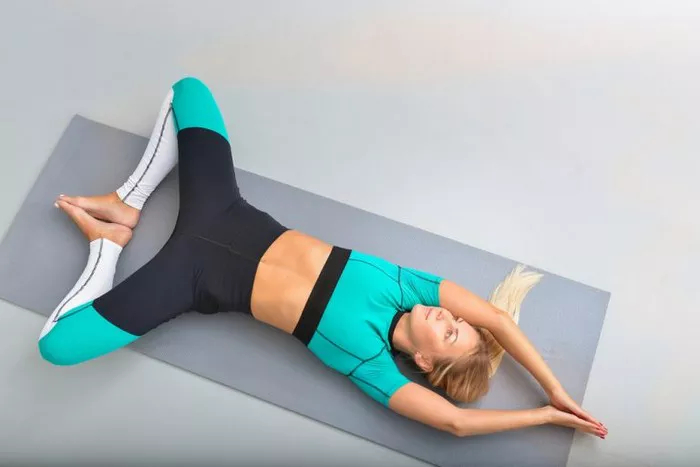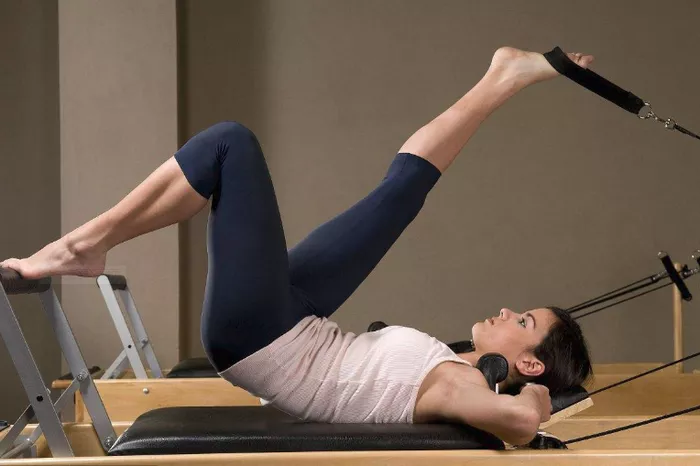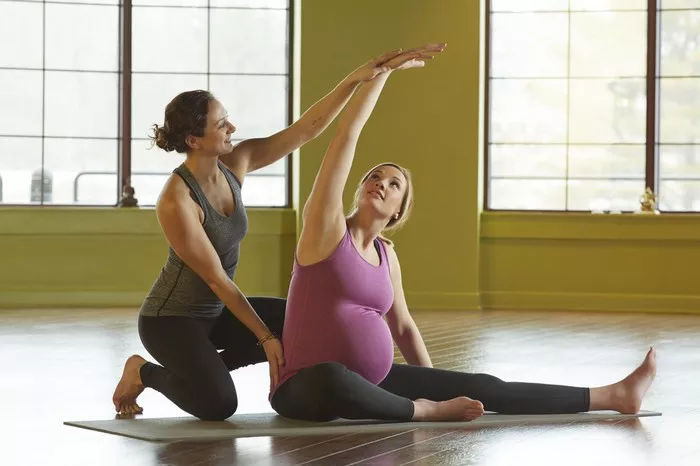Yoga is a wonderful practice that can enhance flexibility, strength, and mindfulness. For many individuals, it serves as a way to relieve stress, maintain physical health, and improve posture. However, if you have knee issues, some poses may put unnecessary strain on the knee joints, potentially worsening pain or injury.
Having taught yoga for many years, I understand how essential it is to practice safely, especially if someone is dealing with bad knees. In this article, we will explore which yoga poses to avoid if you have knee problems, and offer alternatives to ensure you can still enjoy the benefits of your practice without exacerbating your knee issues.
Understanding Knee Pain and Yoga
Before we dive into the specific poses to avoid, it’s important to understand why knee pain can occur and how it relates to yoga practice. The knee joint is one of the largest and most complex joints in the body. It bears the weight of the upper body and facilitates essential movements like walking, running, squatting, and bending.
The most common knee issues people face include:
Osteoarthritis: A degenerative condition where the cartilage in the knee wears down, causing pain and stiffness.
Tendinitis: Inflammation of the tendons around the knee.
Meniscus Tears: Damage to the cartilage that cushions the knee joint.
Patellofemoral Pain Syndrome (Runner’s Knee): Pain in the front of the knee due to improper alignment of the kneecap.
When practicing yoga with bad knees, movements that place excessive pressure on the knee joint or require deep bending can worsen these conditions.
Why Some Yoga Poses are Challenging for Bad Knees
Yoga poses typically require flexibility, balance, and strength. However, many yoga poses involve a range of movements that can put stress on the knees, especially if there is pre-existing injury or inflammation. Deep knee bends, hyperextension of the knee, or weight-bearing on the knees can exacerbate symptoms.
The key is to modify poses and use props (like blocks, blankets, or straps) to provide support and alleviate strain. In many cases, these adjustments can allow you to enjoy yoga without worsening knee discomfort.
Yoga Poses to Avoid with Bad Knees
While every individual’s experience with knee pain can be different, the following poses are typically more challenging for people with bad knees. If you experience knee pain during any of these poses, it’s important to stop and consult with your yoga instructor or healthcare professional.
1. Deep Forward Fold (Uttanasana)
In Uttanasana, you bend forward with your legs straight, trying to touch your feet or the floor. The deep flexion of the knees in this pose can be problematic for people with knee issues. If you have limited knee mobility or inflammation, deep forward folds can place too much strain on the knee joint.
Why it’s challenging: The bending of the knees required for this pose can cause strain in the patella (kneecap) area and the surrounding ligaments, especially if you already suffer from knee conditions like osteoarthritis.
Modification: Instead of a deep forward fold, try bending your knees slightly and keeping them soft. You can also place a yoga block under your hands for additional support or use a chair for a seated variation of the forward fold.
2. Chair Pose (Utkatasana)
In Utkatasana, you squat low as if sitting in an imaginary chair. This position places significant pressure on the knees, especially if the knees extend beyond the toes or the hips do not align properly with the knees. Holding this pose for too long can strain the knee joint and ligaments.
Why it’s challenging: The deep bend in the knee combined with the potential for poor alignment can lead to excessive force on the knee joints, aggravating existing knee pain or causing discomfort.
Modification: Instead of going deep into the squat, only bend the knees slightly, keeping the weight in your heels. Make sure the knees do not extend past the toes, and avoid overextending your knees. If needed, practice with a chair to support your back and legs.
3. Warrior I (Virabhadrasana I)
Warrior I is a powerful standing pose that requires one knee to bend deeply while the back leg remains straight. While it is a great pose for building strength, it can be challenging for individuals with knee issues because of the intense pressure on the front knee.
Why it’s challenging: The front knee is deeply bent, and if the knee is not aligned correctly with the ankle, this can cause stress on the joint. Additionally, if the back knee is hyperextended or locked, it can also cause pain.
Modification: Instead of a deep bend, reduce the angle of the front knee to a 90-degree bend, or even less, depending on what feels comfortable. Focus on keeping the knee in line with the ankle and avoid letting it cave inward. A shorter stance may also help alleviate strain on the knee.
4. Lunge Pose (Anjaneyasana)
Lunge pose involves stepping one foot forward and lowering the back knee toward the ground. It’s a fantastic stretch for the hips, but if you have knee problems, the pressure on the knees during lunges can be problematic.
Why it’s challenging: The deep bend in the front knee and the weight of the body pressing down onto the back knee can cause discomfort, especially for those with conditions like patellofemoral pain syndrome or bursitis.
Modification: Use a cushion or blanket under the back knee to soften the pressure. You can also practice a high lunge with the back knee lifted, rather than lowering it to the floor. Ensure that the front knee is aligned over the ankle, not beyond it, to avoid extra stress on the knee joint.
5. Revolved Chair Pose (Parivrtta Utkatasana)
This variation of Chair Pose involves twisting the torso while the knees remain bent. The deep knee flexion combined with the rotation can cause strain in the knees, especially if there’s any pre-existing discomfort or instability.
Why it’s challenging: The twisting motion, when done with deeply bent knees, can cause tension in the knee joint and may also aggravate the ligaments and tendons surrounding the knee.
Modification: Practice a milder version of the pose by keeping the knees only slightly bent or reducing the range of motion in the twist. Alternatively, consider practicing the seated or standing version of the twist to avoid pressure on the knees.
6. Camel Pose (Ustrasana)
Camel pose is a backbend where you kneel and bend backward to reach your hands toward your heels. This pose places a lot of pressure on the knees, especially if there’s a lack of flexibility or strength in the legs.
Why it’s challenging: The deep knee bend in Camel Pose can place direct pressure on the kneecaps, leading to discomfort or pain. Additionally, the weight of the body moving backward may cause instability in the knee joint.
Modification: If you are practicing Camel Pose and have bad knees, consider using blocks under your hands for support or practicing a modified backbend from a seated position. You can also opt for a gentler version of the backbend, such as a supported bridge pose, that does not require knee flexion.
7. Hero Pose (Virasana)
Hero Pose requires you to kneel with your legs together and your feet facing outwards, sitting between your heels. This position can be painful for individuals with knee problems, especially if you experience discomfort in the kneecaps or the area around the knee joint.
Why it’s challenging: The deep kneeling position can place stress on the kneecaps and the ligaments around the knee. For people with osteoarthritis or other knee conditions, sitting in Hero Pose can exacerbate symptoms.
Modification: Instead of sitting between your heels, place a block or cushion under your hips to reduce the strain on your knees. You can also keep your knees slightly apart and avoid sitting too deeply.
8. Bakasana (Crow Pose)
Crow Pose requires you to balance on your hands with your knees resting on your upper arms. For individuals with knee pain, the pressure on the knees from this pose can be challenging.
Why it’s challenging: The compression of the knees into the upper arms, combined with the weight of the body, can cause pain or discomfort, particularly for those with inflammation or injury in the knees.
Modification: If you want to practice Crow Pose, focus on placing less pressure on the knees by keeping them slightly bent and using props, such as blocks or a bolster, to elevate the knees and reduce strain.
9. Pigeon Pose (Eka Pada Rajakapotasana)
Pigeon Pose is a popular stretch for the hips, but the deep knee flexion involved can cause discomfort for individuals with knee issues. The position can strain the knee joint, particularly if the foot is not properly aligned or the hip muscles are tight.
Why it’s challenging: The deep external rotation of the hip and the flexion of the knee in Pigeon Pose may put undue stress on the knee joint, particularly in individuals with existing knee conditions.
Modification: Modify the pose by keeping the back leg straight and placing a blanket or bolster under the hips for support. You can also practice a seated figure-four stretch to target the hips without putting pressure on the knees.
General Tips for Practicing Yoga with Bad Knees
While certain poses may need to be avoided or modified, there are some general guidelines that can help you protect your knees during your practice:
Listen to your body: Always pay attention to how your knees feel in each pose. If you experience pain or discomfort, stop and adjust the pose or take a break.
Focus on alignment: Proper alignment is key to preventing injury. Be mindful of your knee placement, ensuring it stays in line with your ankle and doesn’t extend beyond your toes.
Use props: Blocks, straps, and blankets can offer support and reduce strain on your knees during poses.
Avoid hyperextension: Be careful not to lock your knees in poses where your legs are straight. This can lead to unnecessary stress on the joint.
Practice gentler styles of yoga: Consider trying Yin Yoga, Restorative Yoga, or gentle Hatha Yoga, which focus on slower movements and longer-held poses. These styles may be less strenuous on the knees.
Conclusion
Yoga can be an incredibly beneficial practice for improving flexibility, strength, and mental clarity, even for individuals with knee issues. However, it’s essential to be mindful of your body’s limitations and modify poses as needed to protect the knees from further injury. By listening to your body, making proper adjustments, and using props when necessary, you can continue to enjoy yoga while avoiding poses that could aggravate knee pain.
If you’re unsure whether a pose is safe for you, it’s always a good idea to consult with your doctor or a knowledgeable yoga instructor. They can provide personalized recommendations based on your specific knee condition, ensuring that you can enjoy the benefits of yoga without causing harm to your knees.
Related Topics:
























